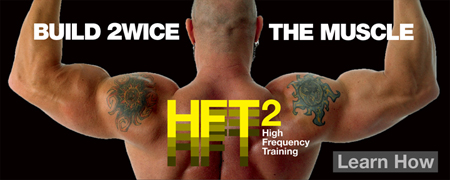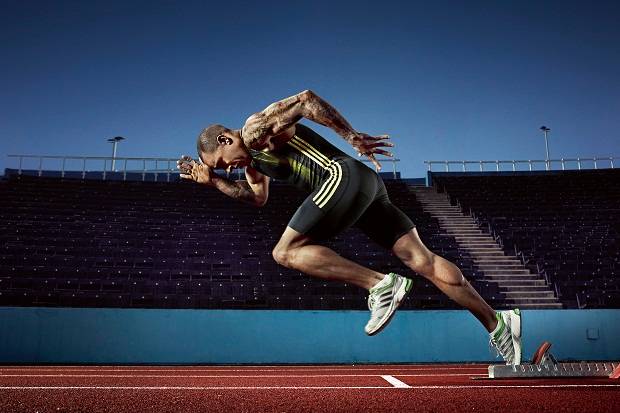 It is difficult to overstate the importance of the glutes for achieving athletic prowess. When they are strong, you can run faster, jump higher and help protect your lumbar spine from injury. Of course, a well-developed set of glutes also make you look damn good in a pair of jeans or yoga pants.
It is difficult to overstate the importance of the glutes for achieving athletic prowess. When they are strong, you can run faster, jump higher and help protect your lumbar spine from injury. Of course, a well-developed set of glutes also make you look damn good in a pair of jeans or yoga pants.
You probably already do a handful of different exercises each week that are intended to strengthen and develop your gluteal muscles. The problem? It’s easy for your nervous system to prioritize the hamstrings and low back muscles, and neglect the glutes, when you do a deadlift, squat or glute bridge. There are two common reasons why.
First, the motor cortex portion of the brain that controls movement devotes very little real estate to the glutes. This is probably one of the reasons why it’s difficult for people to make a strong mind-muscle connection between the brain and butt. Second, since we spend considerable time each day sitting, which requires zero activation of the gluteal muscles, they get weaker and lose their neural input. Therefore, many people have what Stuart McGill, Ph.D., an expert in treating low back pain, refers to as “gluteal amnesia.”
Over the last few months, I’ve been experimenting with a way to easily measure a person’s gluteus maximus strength, based on an assessment that some progressive physical therapists use. Since their version requires a partner, I modified it so you can do it on your own.
Professor Vladimir Janda used to say, “Every exercise is a test.” He was right. And in this case, the opposite is true: the single-leg hip extension test is also a great strength exercise. So you’ll first learn how to use the movement to test your glute max strength, and then we’ll cover the parameters for strengthening it.
Single-Leg Hip Extension Test
How to do it: To test the strength of the left gluteus maximus, first stretch your left hip flexors so you don’t get a false positive. The test should measure your glute max strength, therefore, it’s important to eliminate any soft tissue limitations. Then, lie on your back with your left leg straight and left heel resting on a flat bench. The toes are pointed up, as depicted below.
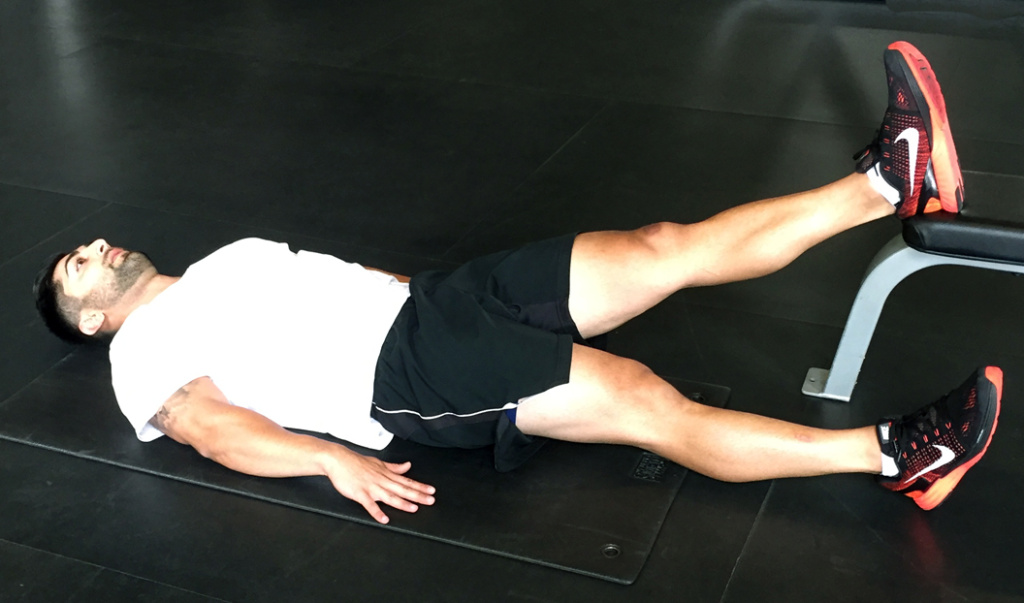
Next, pull down through the left heel to elevate the hips/trunk as high as possible. The test position (aka, screen) is when your hips are at your maximum range of hip extension.
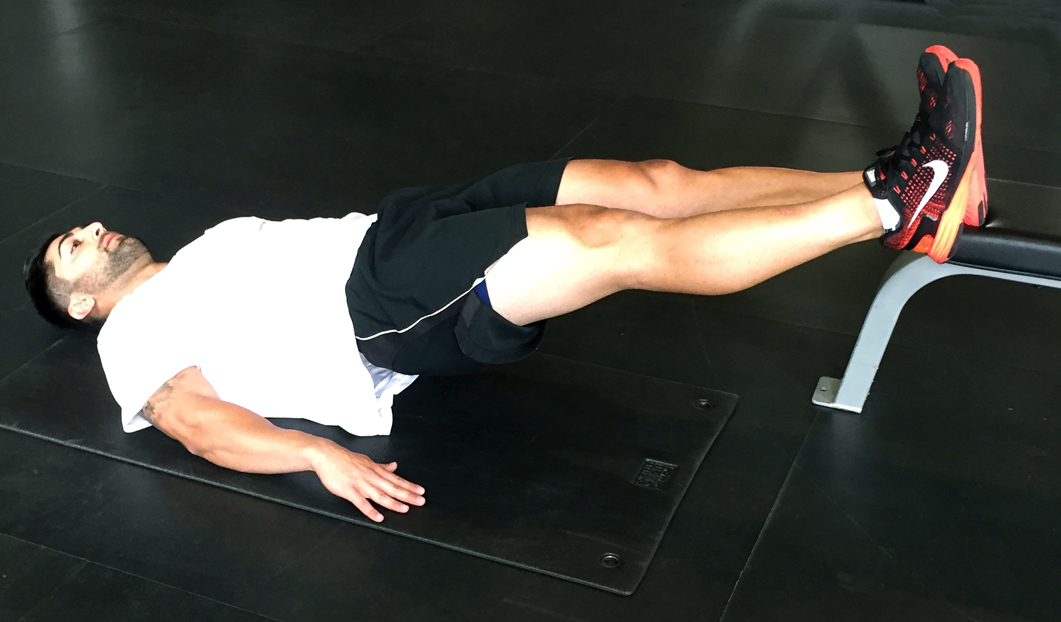
In order to pass the test, you should be able to hold the left hip in full, end-range extension without any rotation of trunk/pelvis, for 10 seconds (shown above). Repeat the test/screen with the right leg elevated, after stretching the right hip flexors.
Explanation: The gluteus maximus and hamstrings are both hip extensors. Therefore, this exercise doesn’t completely isolate the glute max. However, the hip flexion angle at the starting position creates a favorable biomechanical advantage for the glute max to develop force, so that’s why it’s a good strength test.
As is the case with any glute exercise or test, I always run it by my buddy, Bret Contreras, Ph.D. Here’s what Dr. Contreras had to say about the single-leg hip extension test:
This screen will assess the ability of the gluteus maximus to achieve end-range hip extension, while a rotational load is simultaneously placed upon the hips. If you’re up to par, your glutes will be sufficiently strong to resist being pulled eccentrically into hip flexion. If you didn’t pass, this indicates that you need to include extra glute activation drills into your daily warm-ups until proficiency is reached.
How to fix the weakness: What should you do if you didn’t pass the test/screen? You have two options that revolve around high frequency training (HFT) since the glutes respond especially well to it.
One option is to use the same movement we just covered to build strength. Let’s say you didn’t pass the test for the right glute max. In that case, perform 2 sets of the single-leg hip extension hold for as long as possible at the end-range, using the right leg, twice each day. Continue until you can hold the end-range lockout position for 10 seconds. Of course, the same strategy is used for the left glute, if it’s also weak.
The other option is to use a different glute activation exercise for one, or both glutes. For example, if your left glute didn’t pass the test, you could do 2 sets of the single-leg left hip thrust, for as many full reps as possible, twice each day (shown below). Then, retest your strength using the single-leg hip extension test every 10-14 days until you pass.
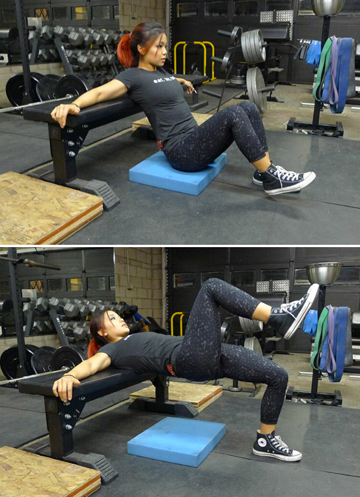 photo courtesy of Bret Contreras
photo courtesy of Bret Contreras
The purpose of the single-leg hip extension test is not to see if you can stop training your glutes with specialized exercises. Instead, the test helps determine if you need extra glute training throughout the week to correct an imbalance.
Now you have a simple way to do it.
Stay Focused,
CW
